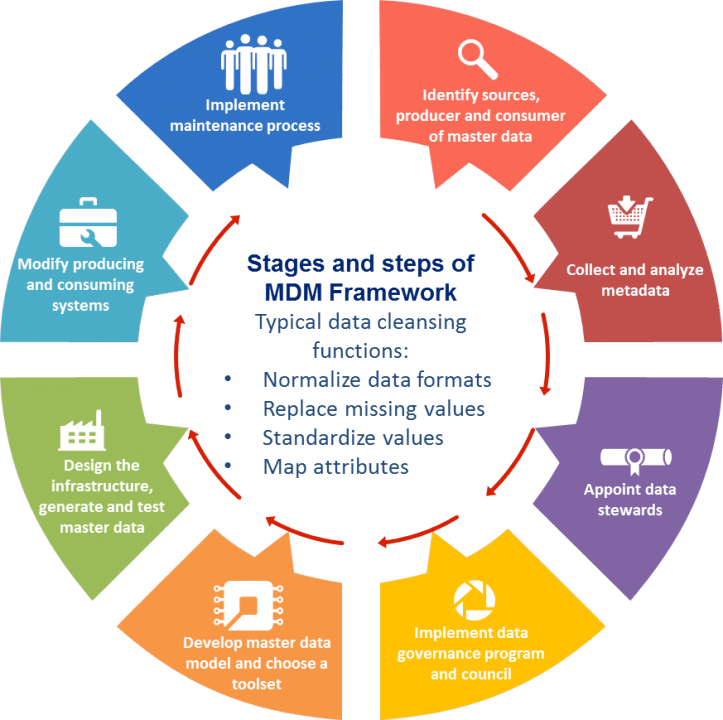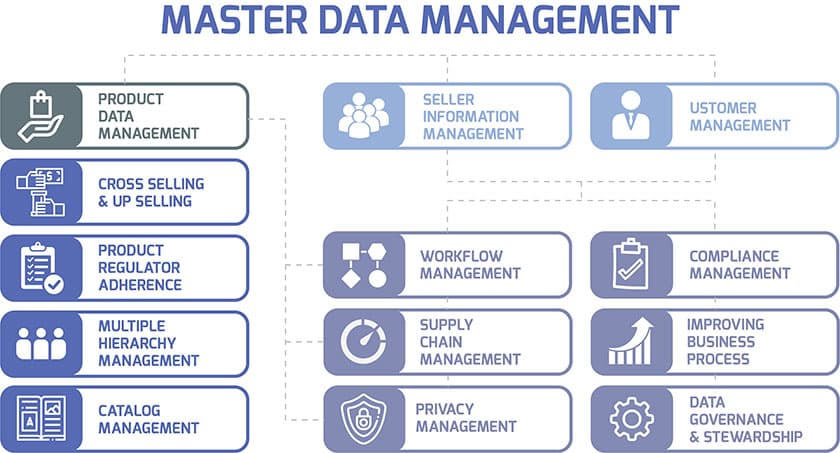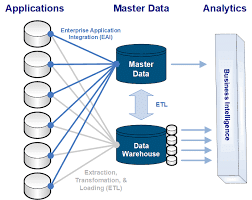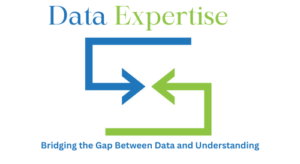Introduction
Welcome to ‘7 Key Strategies in Master Data Management: Unifying Enterprise Data,’ a comprehensive guide to mastering the art of Master Data Management (MDM). This in-depth exploration delves into essential strategies for unifying enterprise data, ensuring consistency, accuracy, and accessibility across an organization. MDM is more than just a technology; it’s a crucial business strategy pivotal in data governance, data quality, and overall business efficiency.
Understanding Master Data Management
Master Data Management (MDM) is a methodical approach to managing an organization’s critical data. It focuses on creating a single, authoritative source of truth for all master data within an enterprise, essential for businesses dealing with large volumes of data across different departments and systems. MDM ensures everyone in the organization has access to the same, accurate, and up-to-date information, reducing errors, improving efficiency, and supporting strategic initiatives.

Facilitating Cross-Departmental Collaboration and Consistency
- Beyond centralizing data, Master Data Management plays a crucial role in facilitating cross-departmental collaboration and consistency within an organization. By providing a unified view of master data, MDM breaks down silos between different departments, ensuring that all teams are working with the same data set. This harmonization is particularly vital for large organizations where different departments may have their own systems and data repositories. MDM ensures that whether it’s marketing, sales, finance, or operations, every department bases its strategies and decisions on a consistent set of data, leading to more cohesive and aligned organizational efforts.
Supporting Regulatory Compliance and Data Governance
- MDM also significantly contributes to regulatory compliance and data governance. In an environment with stringent data regulations, having a centralized system for managing master data helps ensure compliance with various legal standards, including data privacy laws like GDPR or HIPAA. MDM systems can enforce consistent data handling and storage practices, making it easier to adhere to these regulations. Additionally, with the increasing focus on data governance, MDM provides the framework for defining and enforcing policies and procedures around data usage, access, and quality, ensuring that data is not only used effectively but also responsibly and ethically.
The Importance of Master Data Management in Modern Business
MDM has become an indispensable part of modern business strategy. In an era where data drives decisions, MDM provides the foundation for high-quality, reliable data. It’s crucial for businesses aiming to leverage data for competitive advantage, ensuring consistency and availability of critical business information across the organization.

1. Data Governance and Stewardship
- Implementing robust data governance and stewardship is vital in MDM. This involves establishing clear policies, roles, and responsibilities for managing master data, and ensuring data quality and compliance.
- Data stewardship ensures ongoing management and maintenance of master data, involving regular audits, updates, and validation to maintain data integrity.
2. Data Quality Management
- Ensuring high data quality is a cornerstone of effective MDM. This includes processes for data cleansing, de-duplication, and validation to ensure the master data is accurate and reliable.
- Regular data quality assessments help identify and rectify issues, maintaining the integrity of the master data over time.
3. Integration of Data Sources
- MDM requires integrating various data sources to create a unified view of master data. This involves consolidating data from disparate systems, databases, and applications.
- Effective integration tools and technologies are essential for seamless data consolidation, ensuring that data remains synchronized and up-to-date across systems.
4. Scalable and Flexible Master Data Management Architecture
- Developing a scalable and flexible MDM architecture is crucial to accommodate growing data volumes and evolving business needs.
- The architecture should support easy integration of new data sources, adapt to changing data models, and scale to handle increased data loads.
5. Master Data Security and Compliance
- Ensuring the security and compliance of master data is paramount. This involves implementing robust security measures to protect data from unauthorized access and breaches.
- Compliance with data protection regulations like GDPR is essential, requiring processes for data privacy, consent management, and audit trails.
6. User Training and Adoption
- Successful MDM implementation requires user training and adoption. Stakeholders across the organization should be trained on MDM processes, tools, and best practices.
- Encouraging user adoption through training, support, and demonstrating the value of MDM is key to its success.
7. Continuous Monitoring and Improvement
- MDM is an ongoing process that requires continuous monitoring and improvement. Regular reviews and updates to the MDM strategy ensure it remains aligned with business objectives and industry best practices.
- Leveraging analytics and feedback to refine MDM processes and strategies is crucial for long-term success.
Leveraging Technology in MDM
- Embracing the latest technology trends like AI and machine learning can significantly enhance MDM processes. These technologies can automate data management tasks, improve data quality, and provide predictive insights.
- Cloud-based Master Data Management solutions offer scalability, flexibility, and accessibility, making them an attractive option for many organizations.
Blockchain Integration for Enhanced Security and Transparency
The integration of blockchain technology in MDM presents a groundbreaking approach to ensuring data security and transparency. Blockchain’s decentralized nature allows for the creation of an immutable ledger of master data transactions, providing an additional layer of security against tampering and fraud.
This technology can revolutionize how master data is tracked and audited, offering unparalleled transparency in data transactions. For industries where data authenticity and traceability are paramount, such as healthcare and finance, blockchain integration in MDM can significantly enhance trust and compliance.
IoT and Master Data Management Convergence for Real-Time Data Management
The convergence of the Internet of Things (IoT) with Master Data Management opens new avenues for real-time data collection and analysis. IoT devices generate vast amounts of data that, when effectively managed through MDM systems, can provide real-time insights and operational intelligence.
This integration allows organizations to respond swiftly to changing conditions, optimize processes, and enhance decision-making. For instance, in manufacturing, IoT sensors can feed data directly into MDM systems, enabling real-time monitoring and adjustments in production processes, leading to increased efficiency and reduced downtime.
MDM and Big Data Analytics

Enhancing Predictive Analytics and Decision Intelligence
- The synergy between MDM and big data analytics extends significantly into the realms of predictive analytics and decision intelligence. By providing a clean, unified, and reliable dataset, MDM lays the groundwork for sophisticated predictive models and analytics. These models can analyze trends, forecast future scenarios, and provide actionable intelligence that can guide strategic business decisions.
- For instance, in retail, MDM-driven big data analytics can predict purchasing trends, optimize inventory management, and personalize customer experiences. This integration not only streamlines operational processes but also helps in identifying new market opportunities and predicting risks, thereby giving businesses a competitive edge in a data-driven marketplace.
- MDM plays a crucial role in the realm of big data analytics. By ensuring the quality and consistency of master data, MDM enables more accurate and reliable big data analysis.
- Integrating MDM with big data tools and platforms can unlock deeper insights and drive more informed business decisions.
Conclusion
Master Data Management is a strategic imperative in today’s data-driven business landscape. By implementing these seven key strategies and embracing technological advancements, organizations can effectively manage their master data, unlocking its full potential to drive better decision-making, operational efficiency, and competitive advantage. As data continues to be a critical asset, MDM will play an increasingly important role in shaping business strategies and outcomes.




